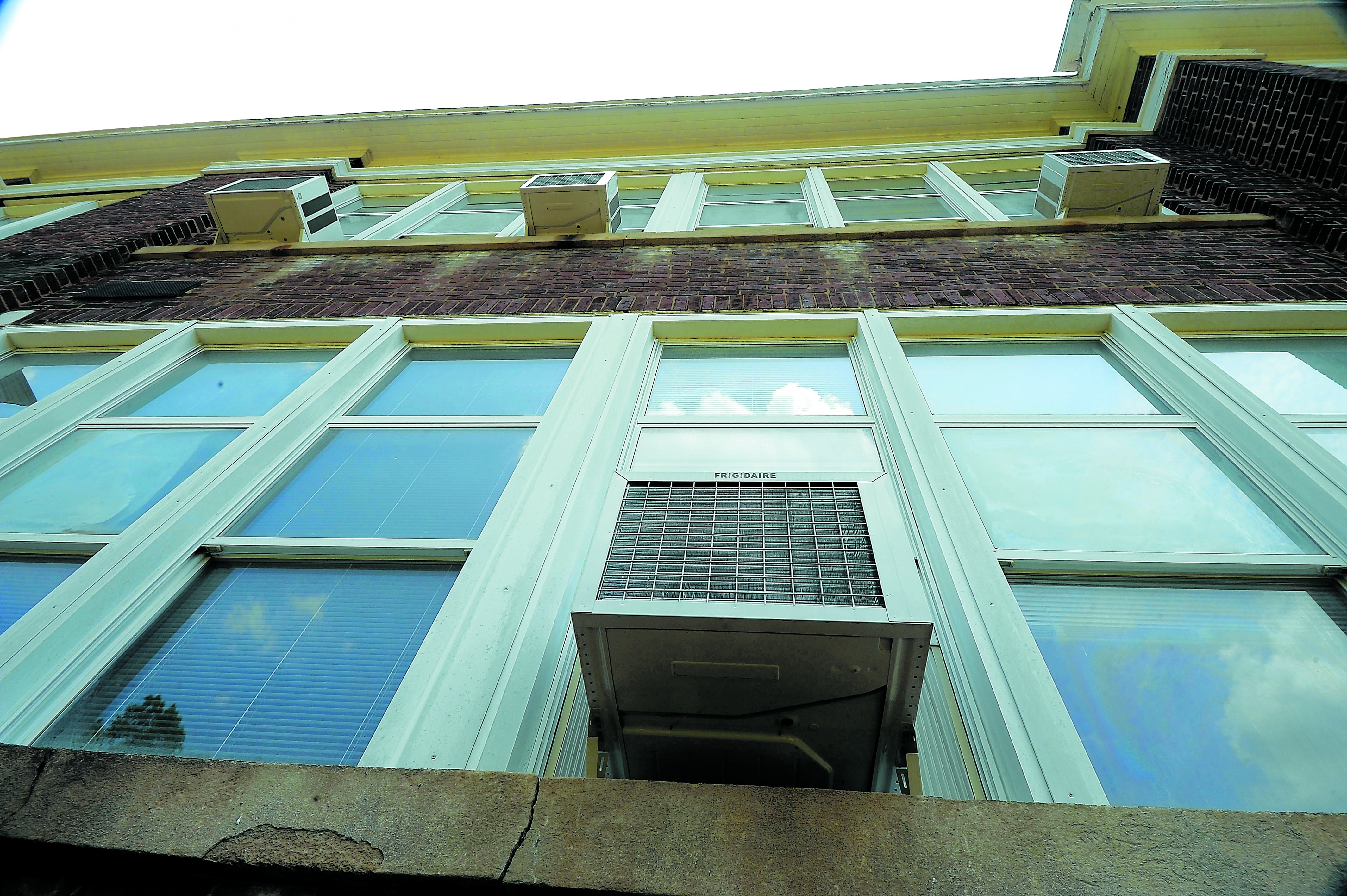Francis Koster: Clean school air is an investment opportunity
Published 12:00 am Sunday, December 2, 2018

- The Rowan-Salisbury Schools' former headquarters in East Spencer relied on window units for air conditioning. File photo.
Experts are now certain that about half our nations’ schools have invisible problems with mold, dust, humidity, temperature and lack of fresh air in classrooms that lower student success a lot. These issues are all revealed when a study is done of Indoor Air Quality (IAQ). Fixing these issues pays great dividends.
Newly invented monitoring equipment now allows students, teachers, administrators, parents and community leaders to survey classrooms and make these invisible threats to kids visible.
These problems are not technically hard to uncover, but there are no federal or North Carolina regulations requiring routine inspection of schools for indoor air quality issues that slow kids’ brains down!
When indoor air quality is fixed, students’ scores on statewide standardized tests improve one or two letter grades — with the scores of lower-income students improving the most. This is about the same impact on student performance as lowering the student-teacher ratio from 1 teacher for every 24 students down to 1 teacher for every 16 students — and is a whole lot cheaper, because it is a one-time expense.
We tend to think of spending taxpayer money on school facilities as “cost.” This is a mistake. If done correctly, it is an “investment” that pays a great rate of return.
Think about how you could spend money to improve your home. You could paint a bedroom, or buy attic insulation. In either case you spend money. In one case you actually get richer because you spent the money.
You do not earn any rate of return if you paint a bedroom. But in the case of the attic insulation, for every $100 you spend, according to Money Magazine, your heating bill goes down about $108 every year thereafter.
The same kind of return on investment occurs when school systems fix their older schools’ obsolete heating and cooling systems. In many cases, those treasured local schools are still trying to keep people comfortable with equipment that is very old. Because of the age of the building, this equipment does a poor job, is expensive to operate — and actually lowers student learning.
In the public discussion, however, it is usually not the building that gets the blame — it is the parents or the teachers. The school system ranks poorly, families are reluctant to buy homes in the district and community economic development stalls.
Sound familiar?
Worn out, these ancient systems were never designed to bring fresh air into the school — rather, they were designed to heat or cool the same indoor air over and over all day long. Early in the school day that air had a lot more oxygen in it. Later, not so much.
It is time for everyone to make sure they have the right focus. We are talking now about how to evaluate an investment that pays a major rate of return — not an expense.
As investors, we need to insulate the attic — and not paint the bedroom.
And when the cost is calculated, we should also explain and total all the benefits. The discussion needs to be about what the rate of return will be on the investment, not how much the project will cost.
One of the key savings comes from the fact that the new or upgraded equipment is a lot more energy efficient than the obsolete equipment. One of my earliest childhood memories is of my father complaining that our family car got 11 miles per gallon of gas. My current car gets around 36 MPG. The same progress is true of school air conditioning equipment.
There are a lot of other numbers to be added into the benefits column. Financially:
• Energy bills are generally cut in about half;
• Teacher absence rates are reduced;
• The cost of hiring substitute teachers is cut about one-third.
Taken together, just the reduction in energy bills, reduction in the number of substitute teacher days, and reduction in school system health-care costs often pay for the upgraded equipment in five to 10 years — a 10 to 20 percent rate of return. Does your IRA earn that?
And then there are the academic benefits:
• Student absence rates are cut in half.
• Standardized test scores rise between 5 and 17 percent.
• The number of scholarships awarded to students goes up due to better SAT results.
Selling this kind of project to the voters is made a lot easier when it is framed as an investment, and not an expense.
Student success can be improved significantly in older buildings by making shrewd investments.
Now you know why and how. What are you going to do?
Dr. Franis Koster lends students, faculty and parents equipment that produces reports on classroom indoor air quality. You may request to borrow a monitor by emailing thepollutiondetectives@gmail.com.

